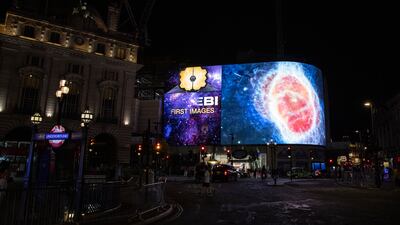The first full set of colour images from the James Webb Space Telescope have been released, showing detailed views of the universe, including stars forming and atmospheric conditions of a hot gas planet outside of our solar system.
Five cosmic targets were chosen for the first suite of pictures — with the first one showing ancient galaxy cluster SMACS 0723 — which were revealed by US President Joe Biden at a White House briefing on Monday evening.
The remaining four were published on Tuesday and include stunning views of nebulae — giant clouds of dust and gas — planets outside our solar system, or exoplanets, and an area in space where several galaxies interact with each other.
Nasa administrator Bill Nelson said the dazzling images will help scientists answer questions that they have not even asked yet.
“It's clear that Webb represents the best of Nasa,” he said during a watch event at the Goddard Space Centre in Greenbelt, Maryland.
“We don't want to ever stop exploring the heavens or stop fearing to take another step forward for humanity.”
Launched in December, the $10 billion James Webb Space Telescope aims to look back at the galaxies formed shortly after the Big Bang, almost 13.8 billion years ago.
It will also observe exoplanets and search for life by studying the chemical composition of these planets’ atmospheres.
“This is a celebration for all humanity,” Nasa astronomer Michelle Thaller said.
The space observatory is now fully in its science operations phase, with enough fuel for 20 years.
The National looks at the four latest images released by Nasa, the European Space Agency and the Canadian Space Agency.
Observing WASP-96 b's atmospheric conditions
The telescope captured a spectrum of the exoplanet WASP-96 b, which was discovered in 2013.
It is made up of mostly gas and is half the mass of Jupiter — the largest planet in our solar system.
Located 1,150 light-years from Earth, it orbits its star WASP-96 every 3.4 days.
Webb’s near-infrared imager instrument and Slitless Spectograph instruments were used to make the observations.
These have helped reveal atmospheric characteristics of the hot gas giant.
Researchers are now able to detect and measure key gases in the planet’s atmosphere, including calculating the temperature and presence of haze and clouds

